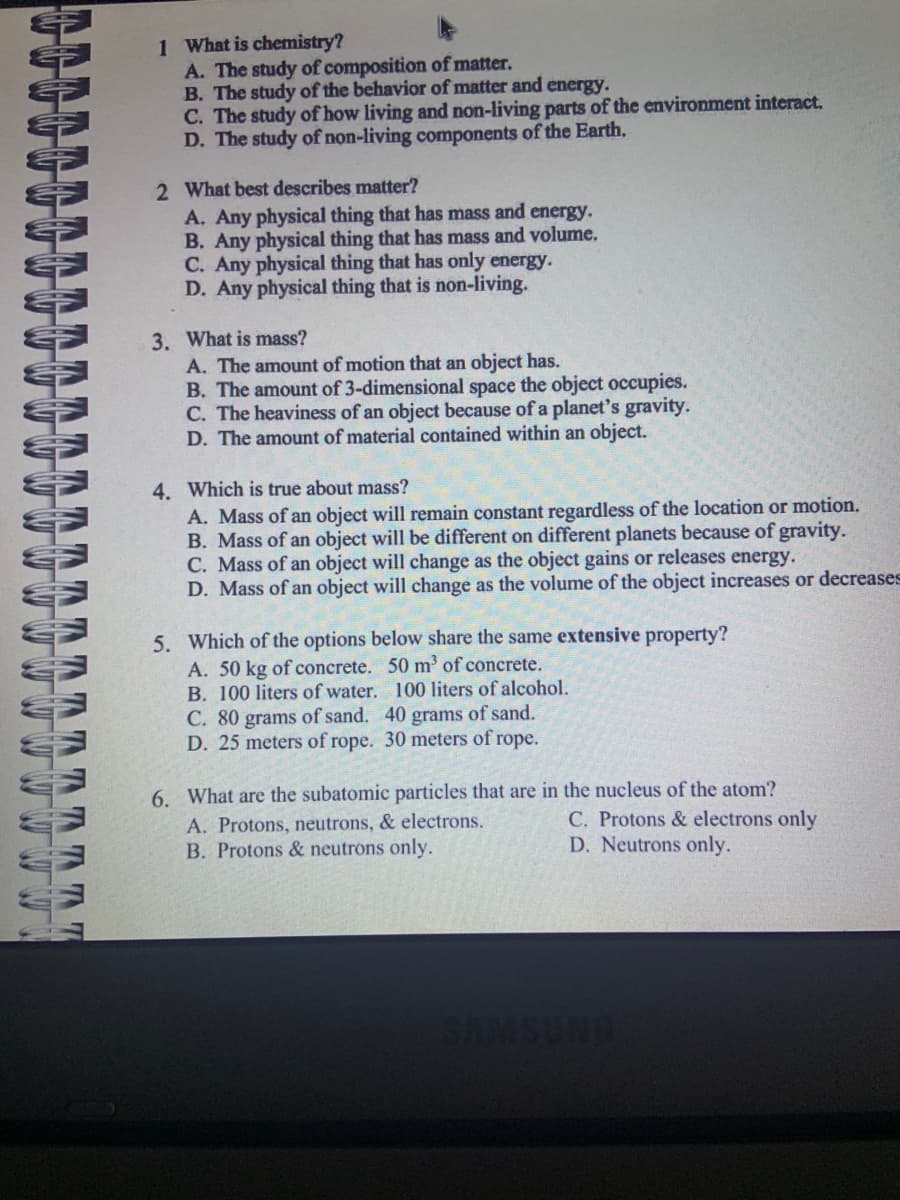1 What is chemistry? A. The study of composition of matter. B. The study of the behavior of matter and energy. C. The study of how living and non-living parts of the environment interact. D. The study of non-living components of the Earth. 2 What best describes matter? A. Any physical thing that has mass and energy. B. Any physical thing that has mass and volume. C. Any physical thing that has only energy. D. Any physical thing that is non-living. 3. What is mass? A. The amount of motion that an object has. B. The amount of 3-dimensional space the object occupies. C. The heaviness of an object because of a planet's gravity. D. The amount of material contained within an object. 4. Which is true about mass? A. Mass of an object will remain constant regardless of the location or motion. B. Mass of an object will be different on different planets because of gravity. C. Mass of an object will change as the object gains or releases energy. D. Mass of an object will change as the volume of the object increases or decrea= 5. Which of the options below share the same extensive property? A. 50 kg of concrete. 50 m³ of concrete. B. 100 liters of water. C. 80 grams of sand. D. 25 meters of rope. 100 liters of alcohol. 40 grams of sand. 30 meters of rope. 6. What are the subatomic particles that are in the nucleus of the atom? A. Protons, neutrons, & electrons. C. Protons & electrons only B. Protons & neutrons only. D. Neutrons only.
States of Matter
The substance that constitutes everything in the universe is known as matter. Matter comprises atoms which in turn are composed of electrons, protons, and neutrons. Different atoms combine together to give rise to molecules that act as a foundation for all kinds of substances. There are five states of matter based on their energies of attraction, namely solid, liquid, gases, plasma, and BEC (Bose-Einstein condensates).
Chemical Reactions and Equations
When a chemical species is transformed into another chemical species it is said to have undergone a chemical reaction. It consists of breaking existing bonds and forming new bonds by changing the position of electrons. These reactions are best explained using a chemical equation.

Step by step
Solved in 4 steps









